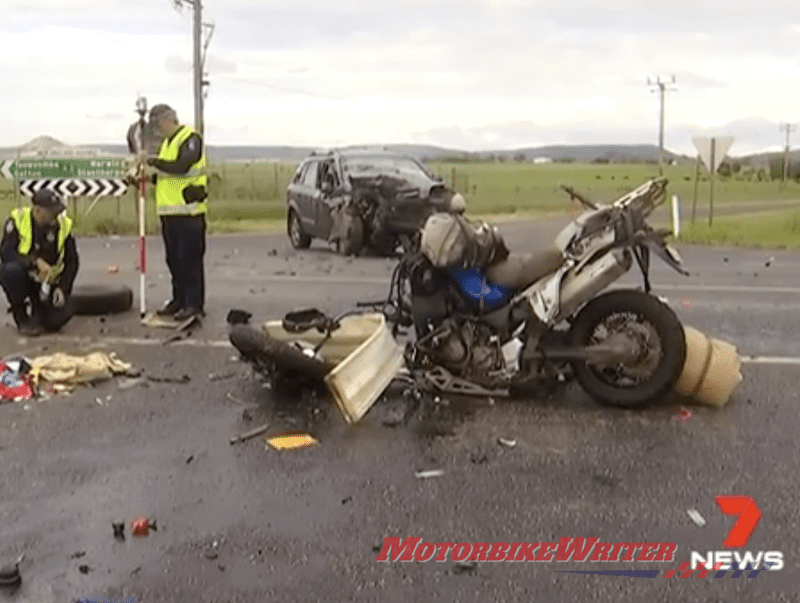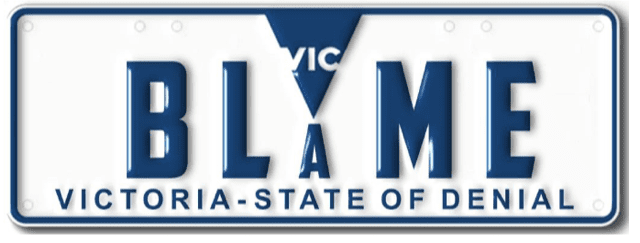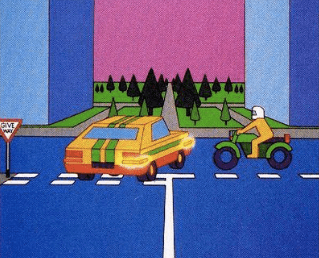Motorcycle road safety campaigns erroneously blame riders for crashes and portray them as a menace on the roads, says a new road safety paper.
The comprehensive 31-page paper, written by Motorcycle Riders Association of Australia spokesman Stephen Bardsley is being circulated to Victorian Government and Road Safety Authorities.
It claims motorcycle road safety campaigns blame riders when the statistics prove otherwise.
Stephen says this causes drivers to treat riders as pariahs of the road and use their vulnerability to intimidate and endanger them.
“Motorcycle riders are often portrayed as dangerous road users,” Stephen says.
“The reality, though, is in most accidents involving a motorcycle and another vehicle, the driver, not the rider, is to blame.”
His paper recommends more driver education, motorcycle awareness campaigns for the motoring public and learner drivers and removing SMIDSY (Sorry Mate, I Didn’t See You) claims as an accident excuse.
He is also calling for the “discriminatory” Victorian motorcycle safety level to be axed.
Stephen’s paper says an extensive 2016 study of 235 accidents in Victoria involving a motorcycle found 66% (158) also involved and another vehicle.
The primary contributing factor was driver error in 109 (69%) incidents and the most common cause (54%) was the driver not scanning for a rider.
According to Stephen’s paper similar results are reflected in motorcycle studies around the world, with UK riders not at fault 80% of the time, 66% in the USA and 70% in Europe.
Law of the jungle
Stephen refers to the lack of motorcycle awareness as the “law of the jungle”.
“The failure by other vehicles to give way to motorcycles illustrates the ‘law of the jungle’ type mentality on Victorian roads,” he says.
“This is where the biggest vehicles feel they rule and so fail to give way to smaller motorcycles, as should a collision occur, the rider will be eaten alive.”
He cites 20017 research conducted by the Automotive Insurance Company AAMI which found drivers believed motor scooters were the new road menace.
“The TAC is responsible for the majority of road safety campaigns in Victoria, some of which have been highly effective,” he says.
“However there are unforeseen consequences of campaigns which portray riders as being responsible for most accidents they are involved in.
“Such advertisements also influence those outside of the campaigns target market and create negative perceptions of motorcycle riders.
“Road safety campaigns … are part of the ‘blame game’ and contribute to the creation of negative stereotypes, perceptions and attitudes of riders.”
Rider awareness
Stephen commends a road safety program used in the USA that educates drivers to respect riders.
The program teaches motorcycle observation, including topics such as:
- How motorcyclists slow down by changing gears which means brake lights may not be illuminated;
- How to keep a safe distance;
- Understanding how and why motorcycles change lanes;
- Not to expect a motorcycle is always able to move out of the way;
- To think about the person under the helmet; and
- How in a motorcycle accident there are no take backs, so drivers are likely never to forgive themselves if a rider is seriously injured or killed.




